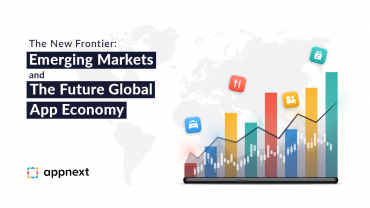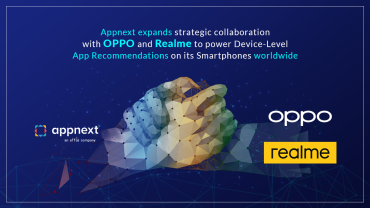When Google launched its first app store, known as the Android Market in 2008, there were just 50 apps available for users to choose from. At the time, Google’s Eric Chu described the store as more a “marketplace” where developers would have an open and unobstructed environment to launch their content. In fact, debuting a new app was as simple as registering as a merchant, uploading the content and giving it a description. For developers, this was the golden age for launching a new product. In those first few years, some app store optimization and a limited social media advertising campaign could be enough to ensure a new offering was the go-to option for most users.
Today the app landscape looks vastly different. In the first quarter of 2021, there were 3.48 million apps for Android users to browse. For iPhone users, there were 2.22 million apps available on the Apple App Store. In this transformed app ecosystem, the methods that previously worked for marketers have become far less effective. New products now risk being lost in a sea of competition. For example, consider the effectiveness of app store optimization when a new health & fitness app is released. According to data from App Annie, in 2020 71,000 apps in this vertical alone were launched across both the Apple App Store and the Google Play Store. Figures from Statista indicate nearly 70% of all new apps failed to hit the 1,000 download mark.
In short, the rivalry between new releases has never been more fierce and the chance for success has never been slimmer.
Amid a sharp uptick in-app store competition, developers have to explore alternative avenues to ensure their apps reach a large audience. Device manufacturers and mobile carriers have a profound impact on app discovery, particularly by allowing developers to leapfrog the competitiveness of app stores. One area that has completely shaken up the app discovery field is the increased utilization of preloaded apps. While preloads are nothing new, the range of apps that are preinstalled has expanded significantly over the years. Many users now consider such apps an indispensable feature of their smartphones, as opposed to unwanted bloatware. In part, this change reflects the growth of third-party app discovery platforms that manage the relationship between developers and manufacturers. These new partnerships have paved the way for much smaller app developers to enter the preload arena by working alongside other new developers under the umbrella of a platform that deals with OEMs directly. Such platforms have developed technology that allows a far more personalized preloading approach. Essentially, manufacturers no longer adopt a one-size-fits-all approach. Instead, they view users as individuals and realize that an app coveted by one user is an unwanted drain on storage space for another.
The benefits of preloaded apps for users, developers, and manufacturers are clear. For users, there is the convenience that these apps offer – it means no more browsing the app store because instead users get personalized and contextualized recommendations directly on the device. Users have confidence in software that has been carefully chosen by the manufacturer and has been fully vetted. This security guarantee means they will likely have fewer concerns about malware or data harvesting. The process of discovering apps that are targeted to users’ needs ensures much greater customer loyalty. The trust users place in these apps benefits manufacturers and developers alike. For manufacturers, they strengthen their brand by providing enhanced user satisfaction.
These users are likely to upgrade their device to the latest model when it is released because they want to make certain that the apps they had previously will be available to them in future. In addition, users tend to avoid the inconvenience of buying a device from a different brand, which implies reinstalling the existing apps and services that populated their previous home screen. For developers, it is an opportunity to bypass the myriad of adverts to which users are exposed every day. They have the opportunity to have their apps discovered by millions of a brand’s users worldwide. In this way, developers ensure their offering is the first thing a user sees and installs. As for carriers, it is the chance to maintain constant engagement with subscribers, to recommend content to users, and to offer special offers and upgrades.
Smartphone technology has, of course, developed rapidly over the past 15 years. Such advancements have paved the way for an increasingly personalized user experience. Users want to feel as though their device is an extension of their personality: the device needs to know which apps and services users want at the precise moment they are needed. The device must then respond in real-time to meet that demand. Manufacturers and carriers have been instrumental in achieving this symbiotic relationship. On-device app recommendations facilitated by third-party platforms have changed how users interact with their devices. Breakthroughs in AI-powered technology mean recommendations are truly unique to the person receiving them. For example, food delivery apps can be shown to users when they have been searching for takeaway restaurants; e-commerce platforms offering deals or discounts specific to a user’s geographical location can be recommended when the user has expressed an interest in purchasing something specific. Recommendations can be tailored according to device model, location, user behavioral patterns and the exact time of the day in which engagement is higher.
While it may not seem immediately obvious, mobile carriers play a vital part in the worldwide proliferation of this kind of technology. Having devices that are 5G-enabled and capable of facilitating VR and AR experiences is only one aspect of delivering the most up-to-date smartphone experience. Without the expansion of networks into emerging markets and investment in the infrastructure necessary for faster download speeds and better mobile coverage, such state-of-the-art hardware is rendered redundant. Fortunately, investment in the telecoms industry in emerging markets such as Latin America and Africa is at an all-time high. For this reason, we can expect more opportunities for developers to expand into these locations, while manufacturers will also reap the rewards generated by buoyant sales.
As we look towards the future, the app economy shows no sign of slowing. Smartphone sales are expected to remain high, innovation will speed up, and users will enjoy better, more personalized and ultimately, more memorable smartphone experiences.




Comments are closed.